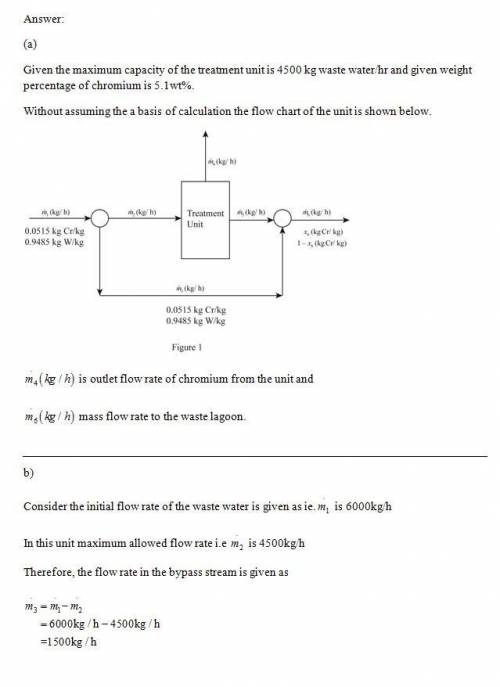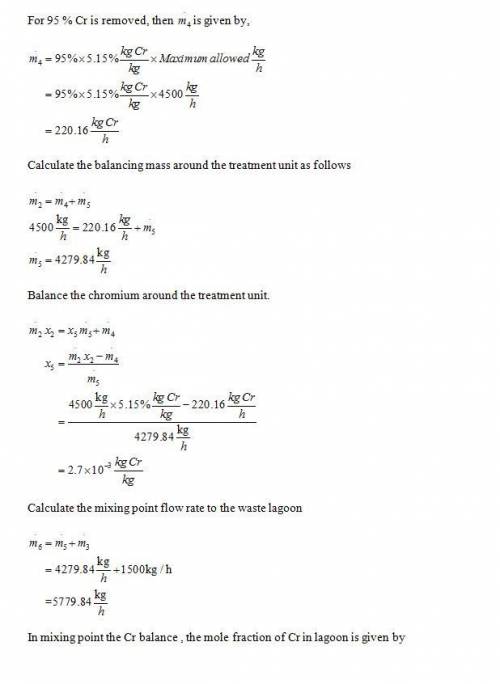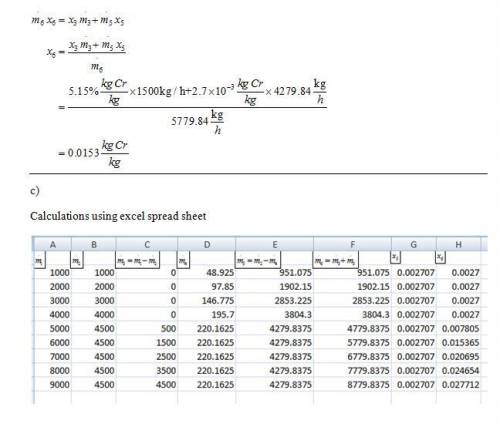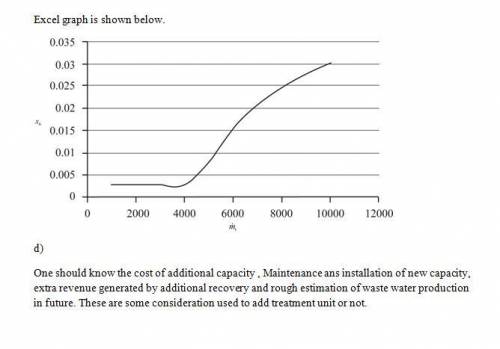
Engineering, 24.06.2020 06:01 ryliepeloquinf
Effluents from metal-finishing plants have the potential of discharging undesirable quantities of metals, such as cadmium, nickel, lead, manganese, and chromium, in forms that are detrimental to water and air quality. A local metal-finishing plant has identified a wastewater stream that contains 5.15 wt% chromium (Cr) and devised the following approach to lowering risk and recovering the valuable metal. The wastewater stream is fed to a treatment unit that removes 95% of the chromium in the feed and recycles it to the plant. The residual liquid stream leaving the treatment unit is sent to a waste lagoon. The treatment unit has a maximum capacity of 4500 kg wastewater/h. If wastewater leaves the finishing plant at a rate higher than the capacity of the treatment unit, the excess (anything above 4500 kg/h) bypasses the unit and combines with the residual liquid leaving the unit, and the combined stream goes to the waste lagoon.
(a) Without assuming a basis of calculation, draw and label a flowchart of the process. (b) Waste water leaves the finishing plant at a rate m_ 1 ? 6000 kg/h. Calculate the flow rate of liquid to
the waste lagoon, m_ 6?kg/h?, and the mass fraction of Cr in this liquid, x6(kg Cr/kg). (c) Calculate the flow rate of the liquid to the waste lagoon and the mass fraction of Cr in this liquid for m_1 varying from 1000 kg/h to 10,000 kg/h in 1000 kg/h increments. Generate a plot of x6 versus m_ 1 .
(Suggestion: Use a spreadsheet for these calculations.) (d) The company has hired you as a consultant to help them determine whether or not to add capacity to the treatment unit to increase the recovery of chromium. What would you need to know to make this determination? (e) What concerns might need to be addressed regarding the waste lagoon?

Answers: 3


Other questions on the subject: Engineering

Engineering, 03.07.2019 14:10, kayabwaller4589
When at a point two solid phase changes to one solid phase on cooling then it is known as a) eutectoid point b) eutectic point c) peritectic point d) peritectoid point
Answers: 3

Engineering, 04.07.2019 18:10, hadellolo8839
Acompressor receives the shaft work to decrease the pressure of the fluid. a)- true b)- false
Answers: 3


Engineering, 04.07.2019 18:10, lowkeyqueenk
Apipe with an outside diameter of 15 cm is exposed to an ambient air and surrounding temperature of -20°c. the pipe has an outer surface temperature of 65°c and an emissivity of 0.85. if the rate of heat loss from the pipe surface is 0.95 kw per meter of length, the external convective heat transfer coefficient (h) is: (a) 12.5 w/m"k (b) 18.6 w/mk (c) 23.7 w/mk (d) 27.9 w/mk (e) 33.5 w/mk
Answers: 1
You know the right answer?
Effluents from metal-finishing plants have the potential of discharging undesirable quantities of me...
Questions in other subjects:










Biology, 11.09.2019 03:30







